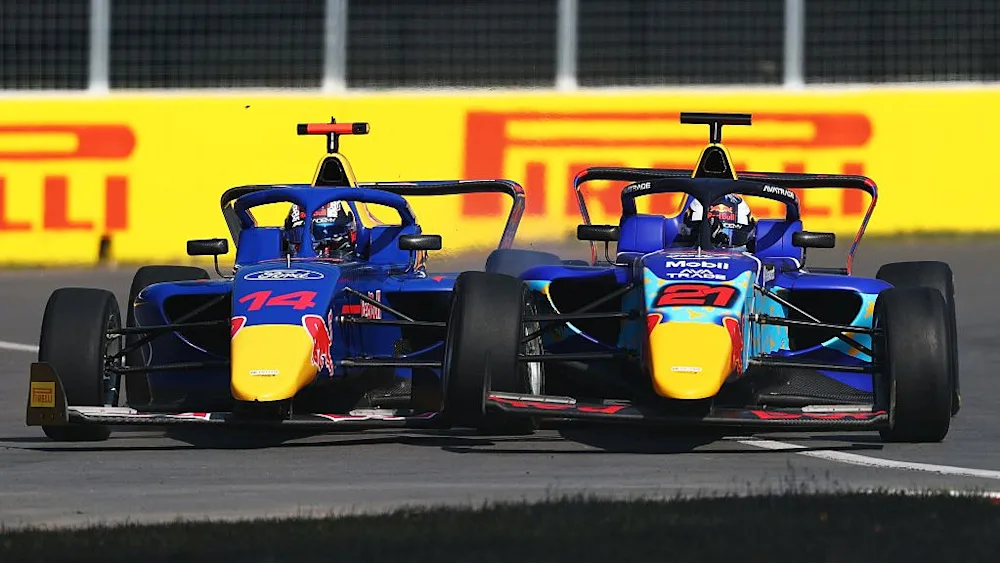How F1 contract negotiations this summer could decide the 2026 title
- Elaina Russell

- Aug 13
- 3 min read
Written by Elaina Russell
Cadillac’s 2026 Formula One debut could trigger contract chaos this summer break and onwards. With all teams and drivers competing for the optimal deal, one clause could change the grid before the lights even go out.

When Formula One returns to Zandvoort after the summer break, the on-track drama will not be the only battle worth watching. Behind the scenes, Team Principals, managers and lawyers are locked in a quieter but equally consequential contest – one fought over clauses, exit triggers and performance terms buried deep within F1 contracts.
In 2026, Cadillac’s long-anticipated arrival will bring two new seats into the mix, making the contract game as competitive as the racing itself. What once sounded like a straightforward “two-year deal” is now often a carefully crafted web of contingencies, opt-outs and marketing-friendly vagueness.
“Multi-year”: F1’s most flexible promise
As of mid-season 2025, nearly every leading team has their marquee driver secured on a “multi-year” deal. Yet as sports lawyer Dan Chapman notes while speaking with Motor Sport Magazine, the term can mean anything but security:
“Referring to a multi-year contract could be for various reasons [...] the contract is so full of one or two-way options, that to refer to the fixed-term duration would be largely meaningless.”
In practice, “multi-year” often means “locked in for next year, but with performance or team clauses allowing either side to walk.” The language allows teams to obscure exact expiry dates, discouraging poaching and keeping rivals guessing.
McLaren’s double lock on Lando Norris and Oscar Piastri seems watertight – but even those deals will likely contain performance and change-of-control clauses.
Similarly, Ferrari’s Charles Leclerc and Lewis Hamilton are both publicly signed on through 2026, though those contracts are unlikely to be totally airtight if the competitive balance shifts post-2026.
The F1 grid’s contract map
A glance at the current lineup tells the story:
McLaren: Lando Norris (multi-year, beyond 2027), Oscar Piastri (multi-year, beyond 2028)
Ferrari: Charles Leclerc (multi-year, beyond 2027), Lewis Hamilton (2026)
Red Bull: Max Verstappen (2028), Yuki Tsunoda (2025)
Mercedes: George Russell (2025), Andrea Kimi Antonelli (2025)
Aston Martin: Fernando Alonso (2026), Lance Stroll (multi-year, beyond 2026)
Alpine: Pierre Gasly (2026), Franco Colapinto (rolling)
Haas: Esteban Ocon (2026), Oliver Bearman (2026)
Racing Bulls: Liam Lawson (2025), Isack Hadjar (2025)
Williams: Alexander Albon (2026), Carlos Sainz (2026)
Sauber: Nico Hülkenberg (2026), Gabriel Bortoleto (2026)
Patterns emerge – long-term anchors for title contenders, shorter terms for rookies or uncertain prospects, and very few fixed end dates published in full.
When clauses change careers
Piastri’s own career arc proves just how crucial contract terms are in determining a driver’s trajectory in the sport. His 2022 Alpine-McLaren saga, decided by the Contract Recognition Board (CRB), reshaped the futures of two teams. Fast forward to 2025, and he’s leading the Drivers’ Championship – all because Alpine’s paperwork failed to lock him down.
Hamilton’s move to Ferrari triggered Mercedes to promote Kimi Antonelli early, while also forcing George Russell into a negotiation year where performance on track doubles as leverage off it.
With both Mercedes men out of contract this winter, and Red Bull yet to confirm Max Verstappen’s teammate, a certain Cadillac-shaped vacuum could pull talent from anywhere.
Cadillac: the wild card
For the first time since 2016, the grid will feature 11 constructors and 22 drivers. Cadillac’s two unfilled seats are some of the most tantalising unknowns of this silly season. The team’s debut will coincide with the new power unit and chassis regulations – making them a clean slate for drivers aiming to lead a fresh project from day one.
Valtteri Bottas and Sergio Pérez have emerged as early contenders for the roles. However, with contract clauses in play, a single trigger from the rest of the field – such as a team missing a Constructors’ Championship target – could release a proven race winner from the 2025 grid into Cadillac’s grasp.
This summer break’s off-track race
While headlines focus on the Norris-Piastri title battle or Red Bull’s form, negotiations are quietly unfolding from Maranello to Silverstone. Toto Wolff has hinted that there is “no rush” to re-sign Russell, Red Bull’s second seat remains open, and Franco Colapinto continues what is effectively a race-by-race audition at Alpine.
One clause activated before the end of season could allow Cadillac to land a marquee signing, setting off a domino effect across the grid. In 2026, the fight for the championship may begin not on the start line, but in the fine print.








Comments